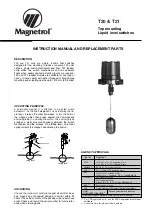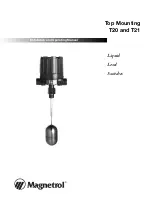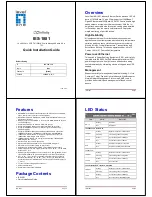
Function description
Operating Manual PIT m4SEU
1004648-EN-02
| 34
Key ID interface
Brief description of ap-
plication
Assignment on controller
Coding
IDo0
IDsync
Input
Coding via jumpers
IDi1
Coding: IN
IDo3
Coding: OUT
IDo1
IDresponse
Input
IDo2
IDdata
Input
IDo3
Coding: OUT
n. c.
IDi0
IDrequest
Output
IDi1
Coding: IN
n. c.
In handshake-controlled communication mode, the PIT m4SEU can be operated in a func-
tional variant. In this case the Key ID number of the transponder key is not downloaded to
the controller. The controller is only used to evaluate IDsync on the Key ID interface. In this
case IDsync is used as a signal output, enabling the controller to recognise whether the
transponder key is valid/invalid. With this functional variant, only 1 input is required on the
controller. The unused terminals on the Key ID interface (IDresponse, IDdata and IDre-
quest) may remain unwired ("open").
5.6.2.3
Advanced communication mode
In advanced communication mode, the download of the Key ID number behaves in the
same way as the handshake-controlled mode. It differs from the handshake-controlled com-
munication mode in so far that inputs are available for an operating mode lock and operat-
).
Features of this communication mode:
}
Download starts via a request from the controller, once the transponder key is inserted
}
Download is repeated by a renewed request from the controller
}
Variable bit rate (min. 2 PLC cycles per bit)
}
Download on 1 data line
}
Min. download time: 28 Bit * (20 ms + 2 * PLC cycle)
}
Identifier for ID end for plausibility check
}
2 inputs for operating mode lock and operating mode selection
}
Input/outputs required on the controller: 3 inputs and 3 outputs
To enable the Key-ID number of a transponder key to be downloaded to the controller in
advanced communication mode, the DIP switch must be set accordingly (see
















































